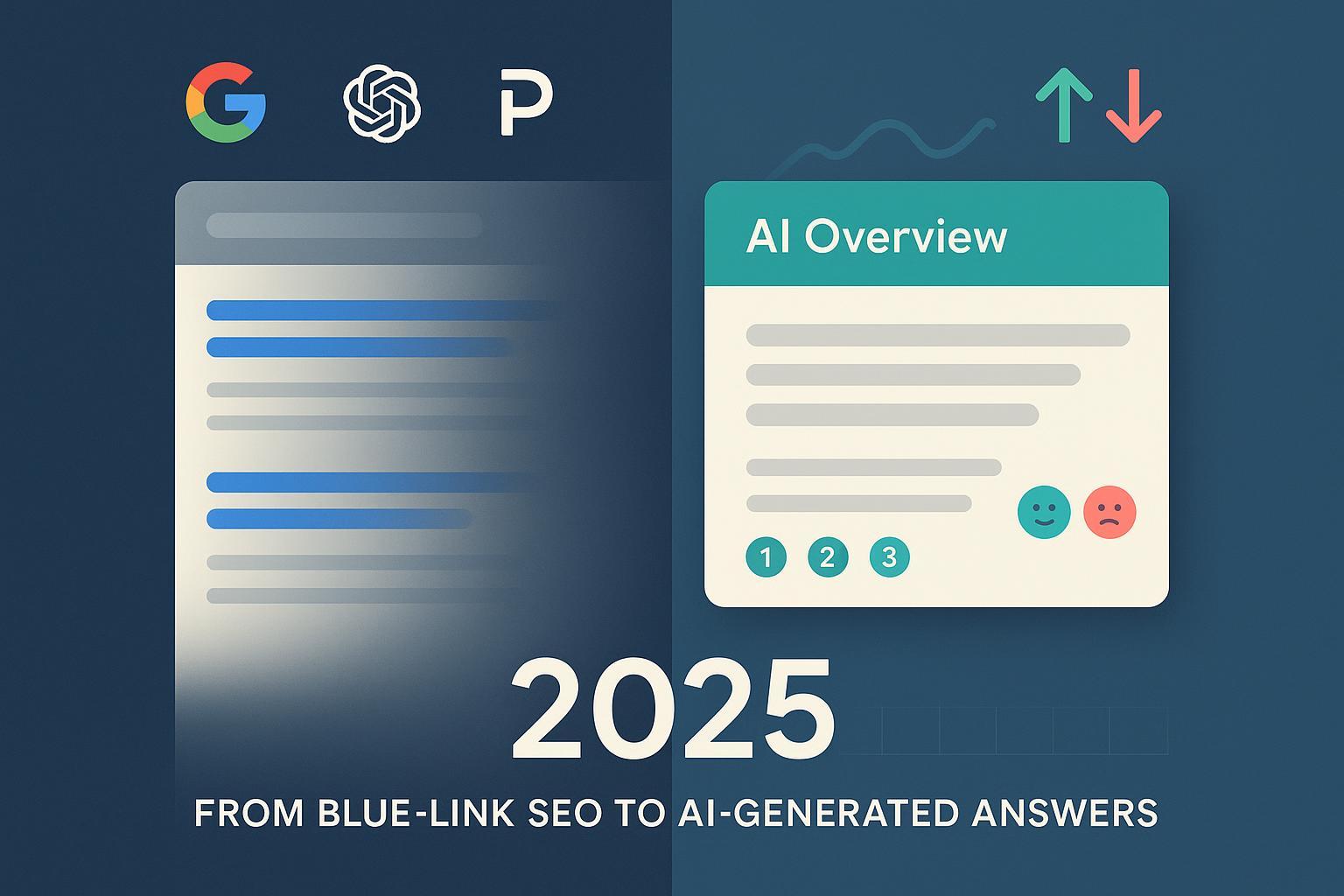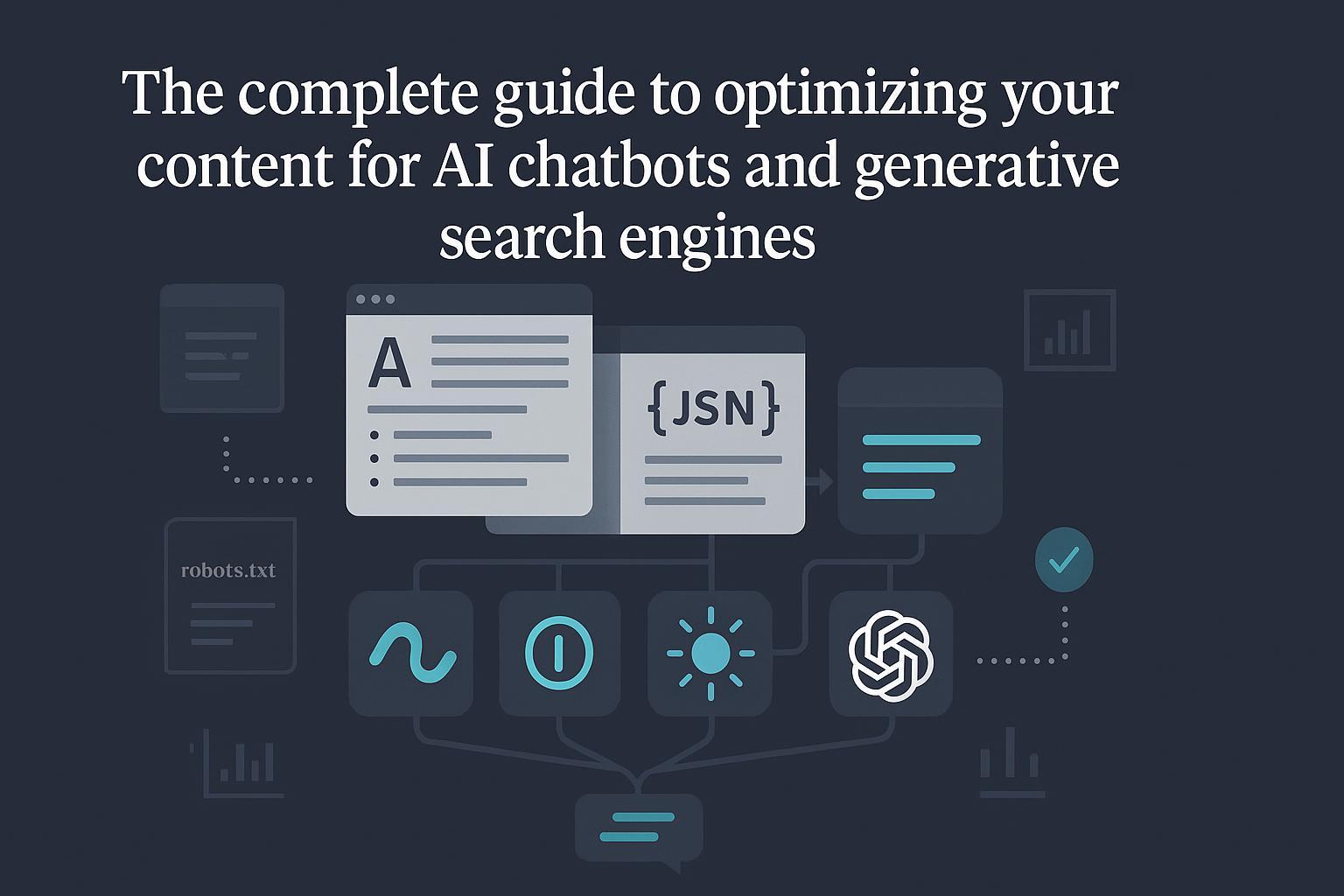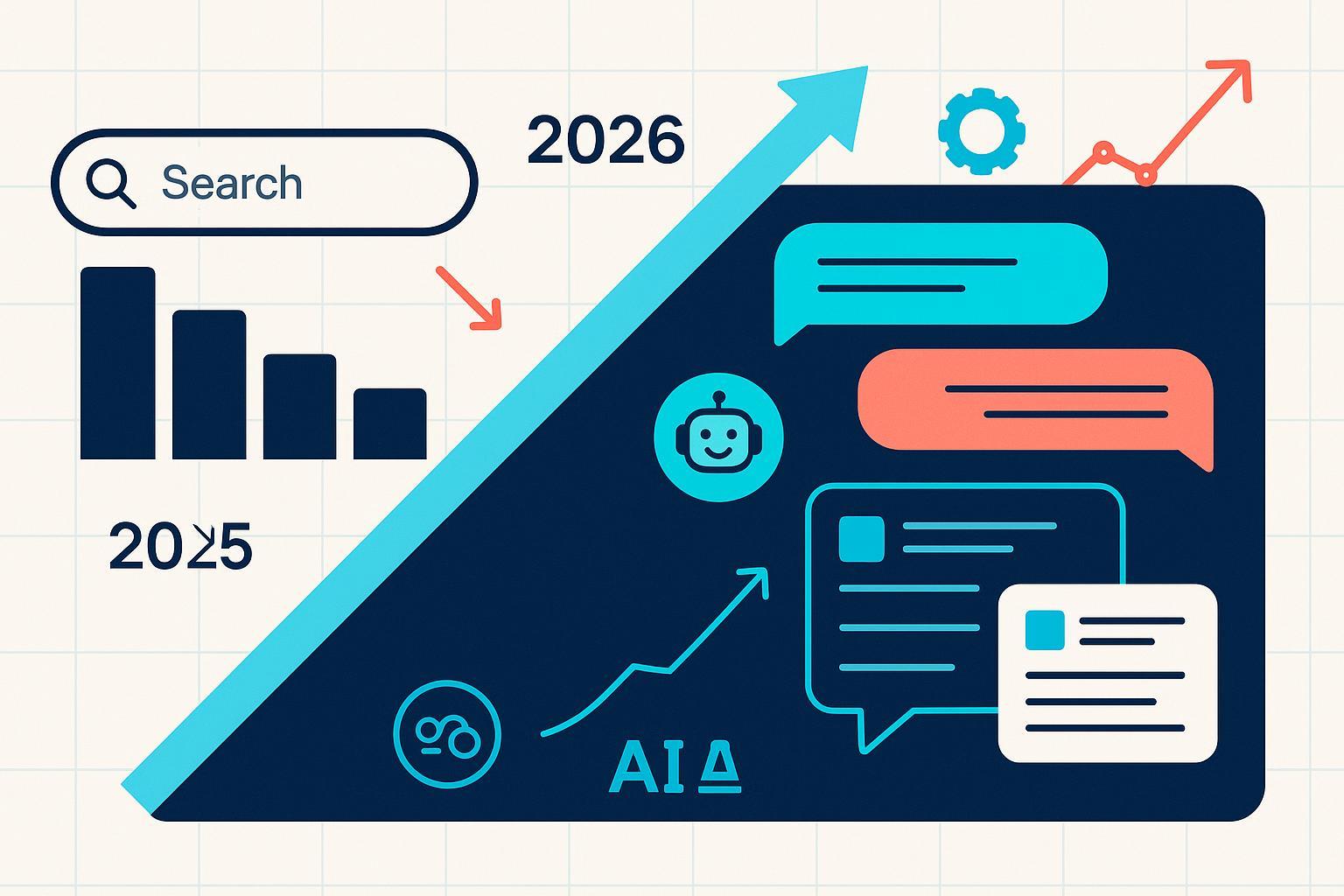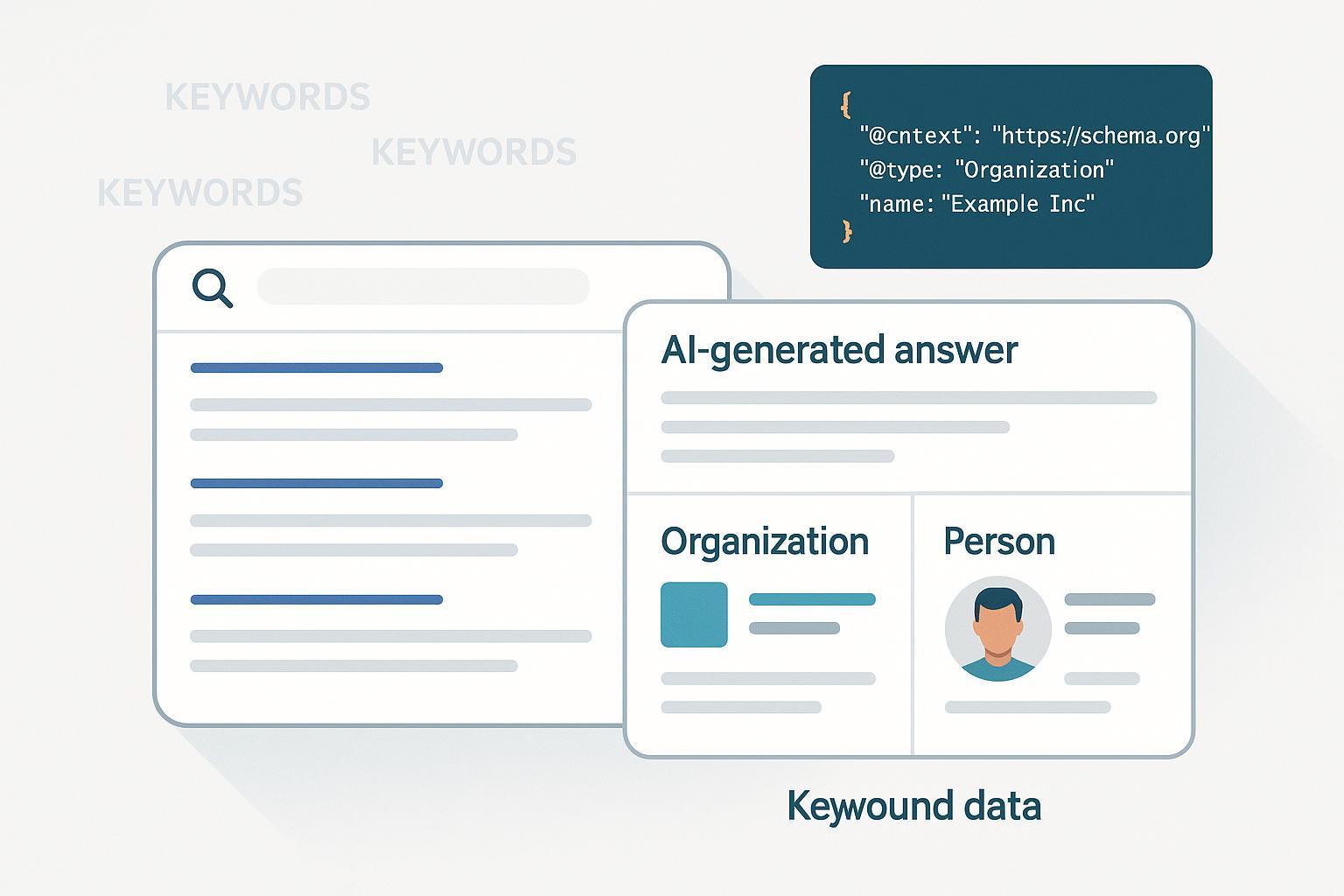Citation-Based SEO in 2025: Adapting for AI Search and Fewer Clicks
Google AI Overviews now shape 13% of searches—learn how to earn citations as clicks drop (only 8% click-through). See 2025's winning SEO tactics.

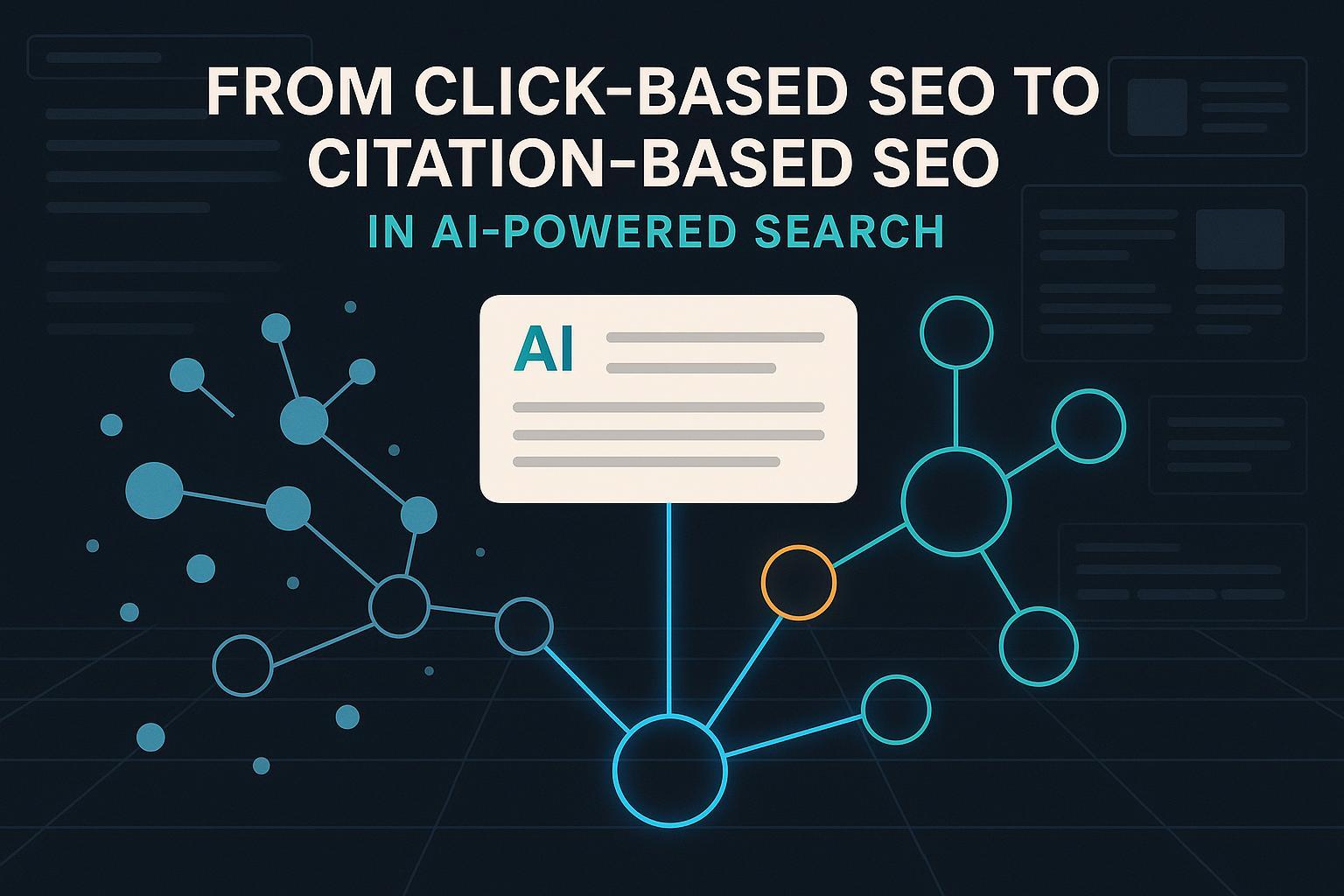
AI-powered search is changing the distribution mechanics of the web. In 2025, success increasingly depends on being selected and cited inside AI-generated answers—not just ranking for blue links. That shift doesn’t kill traditional SEO; it reframes it. The new playbook optimizes for selection first, click second, and measures visibility beyond CTR.
Why the center of gravity is moving from clicks to citations
Two forces define this transition in 2025.
-
Platform reach and product changes. Google expanded AI Overviews to “over 200 countries and territories, and more than 40 languages,” and reported a double‑digit usage lift on queries that trigger AI Overviews, according to the Google product blog expansion update (May 20, 2025). Google’s own guidance emphasizes helpful, unique content—there is no separate “AIO formula,” per Google Search Central guidance (May 21, 2025).
-
Changing user behavior when summaries appear. In a March 2025 analysis of 68,879 searches from 900 U.S. adults, Pew found that users who saw an AI summary clicked a traditional result link in 8% of visits, versus 15% when no summary appeared; abandonment rose from 16% to 26%. See Pew Research Center’s short read (July 22, 2025).
Prevalence varies by query type. Industry tracking in early–mid 2025 showed AI Overviews on roughly 13% of U.S. queries, heavily skewed to informational intent, as covered by Search Engine Land’s May 6, 2025 report and synthesized in Semrush’s July 22, 2025 study of 200,000 AI Overviews. Treat percentages as directional; datasets and time windows differ.
Bottom line: Fewer clicks on many informational queries and more answers that cite multiple sources mean your brand’s ability to be selected and named inside the answer box is now a core distribution KPI.
How answer engines decide what to cite (and what that means for you)
-
Google’s selection principles. Google continues to anchor on Search Essentials and quality policies. The company advises creators to “focus on making unique, non-commodity content that visitors … will find helpful and satisfying,” per the Google Search Central guidance (May 21, 2025). Practically, that means original insights, clear claims supported by sources, and content that resolves intent quickly.
-
Perplexity’s transparent retrieval. Unlike opaque snippets of the past, Perplexity shows visible citations in standard answers and introduced a research mode that “performs dozens of searches, reads hundreds of sources,” according to the Perplexity Deep Research announcement (Feb 14, 2025). This makes it easier to audit whether your pages are being referenced—and why.
Implications for content design:
- Lead with evidence. Open key sections with a concise claim and a named source plus year. Make your data easy to quote.
- Build “answer blocks.” Include short definition boxes, step lists, and dated benchmark tables that an AI can lift and cite.
- Strengthen author identity and E‑E‑A‑T: expert bylines, bios, and transparent methods for any original data.
- Maintain freshness: add visible “Updated on {date}” stamps and a simple change-log. AI systems prefer current sources for time-sensitive topics.
- Keep technical hygiene tight: clear headings, crawlable pages, canonical tags, and appropriate schema (Article, FAQ, HowTo, Organization, Person) to support machine understanding.
A measurement model for the zero-/low‑click reality
Clicks alone undercount the value you create when AI answers reference your brand. Expand your measurement to include:
- Impressions-in-AI: how often a target query triggers an AI answer in your territory/vertical.
- Citation share: the percentage of AI answers that cite your domain versus competitors for a query set.
- Citation quality: the prominence and placement of your citation inside the answer (lead vs. supporting) and on-page sentiment.
- Assisted demand: downstream indicators like branded search lift, direct visits, and assisted conversions following spikes in AI visibility.
- Change velocity: how quickly citations and answer compositions update after you publish or revise content.
A practical workflow example: benchmark your brand’s share of citations across AI Overviews and Perplexity for a prioritized keyword set; identify topics where demand is high but your citation share is low; then create or upgrade assets to fill evidence gaps.
- To operationalize tracking across answer engines, many teams use a monitoring platform such as Geneo. Disclosure: Geneo is our product.
- For inspiration on what to measure at the query level (citations across engines, position within the answer, sentiment over time), review an illustrative query-level AI visibility report.
KPIs and reporting cadence:
- Weekly: citation count and share by cluster; notable sentiment shifts; new entrants in your citation set.
- Monthly: assisted impact (brand search lift, demo requests), page-level updates vs. citation changes, topic gaps closed.
- Quarterly: cohort-level studies (e.g., informational vs. commercial queries), governance review of authorship and evidence standards.
The “be‑citable” checklist you can ship this quarter
- Make an evidence-first summary box near the top: 2–3 sentences with a dated statistic or definition plus a concise method note.
- Add scannable modules: definition (1–2 sentences), steps (5–7 items), and a small, dated metrics table where relevant.
- Cite primary sources with year and link to canonical pages; avoid generic “here/source” anchors.
- Publish original data where you can: even small surveys or log analyses with clear methods are highly cite‑worthy.
- Bolster author and org signals: expert bylines, credentials, About page, and a contactable organization profile.
- Maintain a freshness policy: set 30/60/90‑day review cadences for volatile topics; keep an on‑page change-log.
- Align your entities and terminology: use official names like “AI Overviews” and “Deep Research,” and disambiguate acronyms in first use.
Tactics that lift selection odds (beyond your site)
- Source diversity via communities: High-quality discussions and case studies on reputable forums can surface in AI training and retrieval. If community engagement fits your brand, see these best practices for earning citations via Reddit communities.
- Structured data the right way: Use FAQ/HowTo schema where users actually need stepwise guidance; don’t manufacture low‑value Q&A.
- Editorial patterns: Write with explicit claims and dates. For example, “In 2025, we found X with N=…” is easier to quote and audit than generic assertions.
- Design for quotability: Short, self-contained paragraphs; labeled charts/tables with clear titles and source notes.
What the next 6–12 months likely hold (and how to future‑proof)
- More global coverage and UI changes. Google indicated rapid expansion and faster experiences in AI Overviews (May 2025). Expect continued adjustments to how citations are displayed and attributed.
- Measurement will normalize. As more teams adopt AI visibility tracking and define citation KPIs, benchmarks by vertical will emerge. Until then, compare against your own baselines and a fixed competitor set.
- Governance matters. The March 2025 updates tightened quality and spam policies; thin, scaled content is less likely to be cited. Double down on originality standards and revision discipline.
If you lead SEO/content, your mandate is clear: engineer content to be selected, instrument measurement beyond clicks, and iterate faster than the UI changes. If you need a purpose-built way to monitor cross‑engine citations and sentiment, consider adding a dedicated tracker to your stack; our team builds one and can share implementation lessons learned.
Evidence & methods (read this to interpret the numbers)
- Google scope and guidance come from official posts in May 2025: see the Google product blog expansion update and Google Search Central guidance.
- Behavioral impact figures (8% vs. 15% clicks; abandonment 26% vs. 16%) are from Pew’s March 2025 dataset of 68,879 searches by 900 U.S. adults, published July 22, 2025: Pew Research Center short read. Google and others have questioned broad generalization; we present scope and caveats.
- Prevalence estimates (≈13% of queries in early 2025) are summarized by Search Engine Land (May 6, 2025) and detailed in Semrush’s 200,000‑AIO study (July 22, 2025). Datasets differ; treat percentages as directional.
- Perplexity’s citation behavior and Deep Research capabilities are described in the Perplexity Deep Research announcement (Feb 14, 2025).
Change‑log
- 2025‑10‑07: First publication. Included Google May 2025 expansion and guidance, Pew July 2025 behavior data, SEL/Semrush AIO prevalence, and Perplexity Deep Research context. Added measurement framework, be‑citable checklist, and internal links for tracking and tactics.


